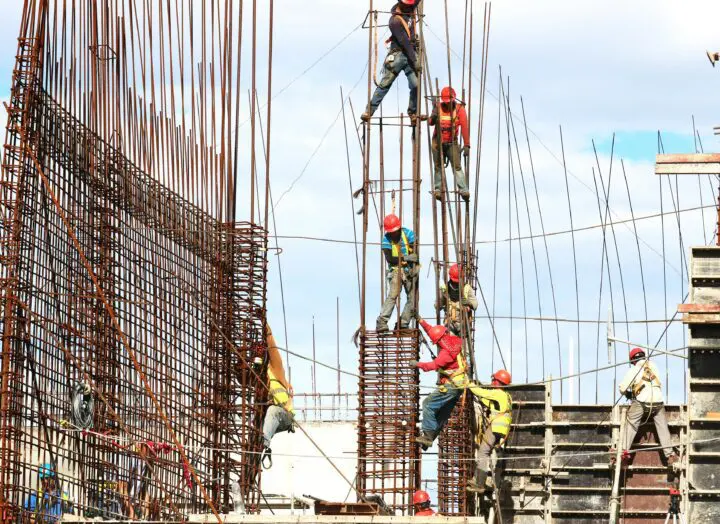The Future Blueprint: ESG in the Design and Construction Industry
If you believe that ESG and sustainable design are synonymous, you’re not alone.
Text
If you believe that ESG and sustainable design are synonymous, you’re not alone. Diving deeper into their intricate nuances, we discover that ESG and sustainable design, while intertwined in essence, stem from different branches of our modern vocabulary. The confusion is indeed a matter of nomenclature and context.
In the financial realm, the term “sustainability” delves into an organization’s endeavors that contribute to long-term value creation. To the financial sector, sustainability translates to a financial outlook of an organization that doesn’t jeopardize the future for present gains. It’s about longevity in dollars, ensuring a company thrives beyond the volatile tides of today. This definition of “sustainability” is also what is known as “ESG.”
Conversely, within the design and construction industry, “sustainability” paints a picture of eco-conscious and energy-efficient designs that are resilient against the unpredictable tempests of Mother Nature.

Different, yes, but undoubtedly related. Why?
Our planet and society are in a state of transition. Navigating our complex era—shaped by digital revolutions, pandemic-induced workforce evolutions, geopolitical seesaws, looming economic uncertainties, and the undeniable reality of climate change—can be a daunting task for businesses, particularly for the design and construction industry.
Consider the existential threat of climate change. Extreme weather events, increasingly fierce and frequent, are sounding alarms for design and construction professionals, city planners, and society. When hurricanes batter, wildfires rage, and droughts linger, the ramifications extend to financial losses, damaged assets, and compromised human health. The clock is ticking as global temperatures edge towards the dire 1.5-degree warming threshold. The urgency for adaptation and mitigation has never been more palpable.
Yet, this very urgency prompts another set of challenges—transition risks for business. The global pivot from fossil fuels to greener energies triggers concerns about:
- shifting regulatory landscapes;
- evolving market demands for sustainable solutions; and
- rising demand for resilient design and construction to withstand the immediate brunt of climate change.
Economic uncertainties exacerbate the situation. Erratic inflation rates, unpredictable costs for materials and labor, and a tightening credit scene impact project financing. Not to mention the growing talent scarcity post-pandemic, the murky future implications of artificial intelligence for design firms, and the amplified project delivery risks in an imbalanced supply and demand scenario.
With the stakes this high, the financial market’s concern over ESG risk frameworks is hardly surprising. By evaluating environmental, social, and governance risk factors, these frameworks dissect the long-term viability of corporations amidst a sea of emerging, disruptive risks. Think of it as a “peek under the hood” of companies—a deeper understanding of vulnerability and positioning in an uncertain future.
Traditional financial assessments, confined to balance sheets and cash flow statements, provide but a narrow glimpse into an organization’s robustness. This is where ESG risk analysis broadens the horizon. Financial institutions, despite ESG pushback from certain political stakeholders, now weave ESG metrics into their evaluation tapestries, showcasing a paradigm shift in how value is perceived and assessed.
Our world is being redesigned, not just in the built environment, but in financial principles. Architects don’t merely have the privilege of shaping the tangible future through the built environment; they also have the imperative to sculpt the trajectory of their own professional destinies. For decades, the clarion call for sustainable and resilient design was met with hesitation, often viewed as mere embellishments rather than necessities. With the financial sector now recognizing the financially material risks posed by climate change, there’s an unprecedented tailwind propelling architects forward. ESG is not just another industry buzzword; it’s a transformative force, urging the profession to think beyond structures and into strategic business models that harness long-yearned-for opportunities.
While the path to universally embracing ESG may be paved with challenges, its direction remains clear. The design and construction industry must adapt and understand the intricacies of ESG and its profound impact on business.
Victor and CNA work with the AIA Trust to offer AIA members quality risk management coverage through the AIA Trust Professional Liability Insurance Program, Business Owners Program, and Cyber Liability Insurance program to address the challenges that architects face today and in the future.
More on Climate Change & Contracts

Building Information Modeling and the Transition to Integrated Project Delivery
Contracts ▪ Professional Liability ▪ Article
Protecting Your Firm When Going Green
Contracts ▪ Professional Liability ▪ Article
Lender Assignment and Certification Requirements
Contracts ▪ Professional Liability ▪ Article